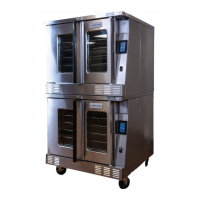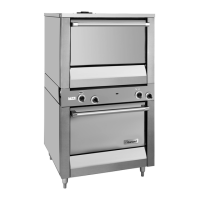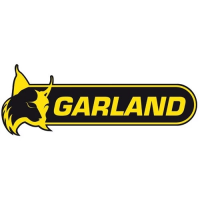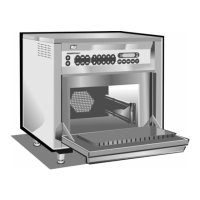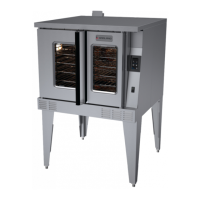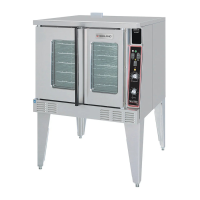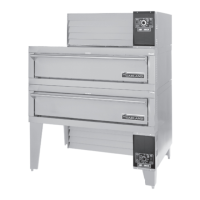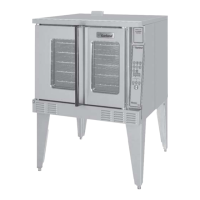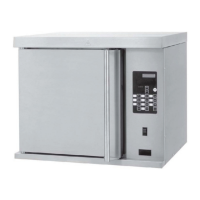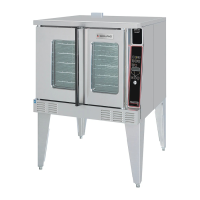Part # 4519069 (07/24/09)Page 22
4. Rotate the air shutter to obtain the following:
a. Open (star) burner – 12 mm stable, sharp inner blue
cones.
b. Hot tops, griddles – 8 mm stable, sharp inner blue
cones.
c. Knuckle burners – 8 mm stable, blue ame.
d. Charbroiler burners – 12 mm stable, blue ame.
MAINTENANCE AND CLEANING continued
5. If the burner ames are sharp and lift o the burner ports,
reduce the primary air by closing the air shutter.
6. If the burner ames are lazy and yellow in appearance,
increase primary air by opening the shutter.
7. If poor burner performance persists, check for proper gas
pressure.
CONVECTION OVEN (RC) – OPERATING TIPS
The following notes are a guide for the use of convection
ovens.
1. Set oven temperatures 5°C to 10°C lower than recipes
specify for the use of standard ovens. The cooking time
may also be less, depending on the product, but two
to ve per cent less cooking time is a general rule. This
needs to be checked for rst time.
2. Cooking time and oven temperate will vary depending
on the size of the load, the temperature of the product,
mixture of the recipe and, in particular, the moisture
content of the product.
3. When a satisfactory cooking time and temperature for a
particular product is established, make a record for future
use.
4. Preheat the oven before use. To reach 175°C takes about
15 minutes. For the best results, pre-heat the oven for 30
minutes to allow for thorough heat saturation.
6. Set the product in the center of the oven for the best heat
circulation.
7. A convection oven will hold three 450mm x 660mm sheet
pans, six 305mm x 500mm x 63mm steam table pans or
one 530mm x 450mm x 175mm roast pan with cover.
8. Never place pans directly on to the oven bottom. Always
use the lowest rack position which allows the air to
circulate within the over cavity.
9. Load and unload food as quickly as possible to prevent
an excessive drop in temperature.
10. Avoid the use of warped pans because level pans bake
more evenly.
11. Do not use a deep pan for shallow cakes, cookies, etc., as
circulation across the surface is essential for even cooking
and browning.
12. To prevent excessive shrinkage, roast meats at a low
temperature: 120°C to 160°C.
13. When re-thermalizing frozen products, pre-heat the
oven 10°C higher than the cooking temperature to
compensate for heat loss during and after loading.
NOTE: The thermostat must be returned to the cooking
temperature after loading.
14. To conserve energy, turn the oven o and allow it to cool
down when not in use.
